Chapter 1, Part 21
For centuries the Malla kings had reigned over the Kathmandu Valley marked by periods of repetitious amity and enmity among the rulers of Kathmandu (Kantipur), Patan (Lalitpur) and Bhaktapur. Since the 13th century, they had shaped the distinct Newar culture reflected in its unique architecture, belief system and language which drew people from neighboring regions to come and settle down in the heart of the lucrative trade route between India and Tibet, further enriching the fusion culture.
However, in the 18th century a small kingdom ruled by the Shah dynasty centered around the hill town of Gorkha to the northwest of Kathmandu posed a challenge the Mallas never encountered before. Nara Bhupal Shah began an expansionist era of his kingdom by attempting to control Nuwakot, a small town between Gorkha and Kathmandu. Despite his father’s failure to conquer the town, Prithvi Narayan Shah – Nara Bhupal Shah’s son, continued the expansionist policy by launching a second attempt to subjugate the town’s residents in his first year as king.
A year after his first failed attempt to put Nuwakot under his control, Prithvi Narayan Shah finally captured the strategic town, using it to launch several campaigns to disrupt trade activities between the valley and the outside world to weaken the Mallas. The Shah ruler’s great ambition to conquer the lands between India and Tibet and unify them under his rule was driven by his fear that the powerful kingdoms surrounding this landlocked corner of the Indian subcontinent would eventually encroach upon the vicinity of his realm. Defeating the Mallas would provide him with legitimacy to become the king of all Nepal.
With historical accounts dating back to the 11th century, Kirtipur was developed as a settlement four centuries later under the rule of the Malla dynasty. Its proximity to Kathmandu and its hilltop location made the town an important stepping stone for the Shah rulers to take control of the entire valley. In the mid-18th century, Prithvi Narayan Shah and his Gorkhali army attacked Kirtipur, only to end in a humiliating defeat for the invading forces. The Shahs’ commander was killed and the king himself only escaped the battlefield by disguising himself as a holy man.
Prithvi Narayan Shah retreated and planned a second attack which would be carried out seven years after the first. During the break, he imposed a blockade on the Kathmandu Valley, hoping it would dampen the morale of the residents of the valley. During the second assault, the victory the Gorkhalis had hoped for dissipated as the residents of Kirtipur successfully defended their impregnable town from the invaders and emerged victorious once again.
The frustrated Shah king retreated for the second time and was more determined than ever to launch another attack. Three years later, it materialized and the residents of Kirtipur once again fought bravely, and this time they were backed by all three Malla kings of the Kathmandu Valley. Had a nobleman from Patan not shifted to Shah’s side, Prithvi Narayan would probably have suffered his third defeat. But the treason proved to be a major blow to the Mallas, and a year later both Kathmandu and Patan fell into the hands of the Shahs, while Bhaktapur followed suit one year afterward.
Avenging the losses he sustained during the first and second failed attempts to conquer Kirtipur, Prithvi Narayan Shah ordered the mouths and noses of all male residents of Kirtipur over the age of 12 to be cut off, save those who were able to play wind instruments for he forced them to celebrate his victory over the town.
By the end of the 18th century, the Shah dynasty unified Nepal and ruled the country until the abolition of the monarchy in 2008. The people of Kirtipur, long resentful of the then ruling dynasty, went as far as not allowing any family member of the Shah dynasty to set foot in the town. And on the verge of the country’s transformation into a republic, Kirtipur was the center of anti-monarchy protests in Nepal.
Today Kirtipur is a sleepy town peppered with red-brick houses – occasionally painted in turquoise – as well as temples built in distinct Newar architectural style and embellished with Newar ornate wood carvings. Its seemingly docile face hides the courageousness and bravery of its people, stemming from its long, bitter history within the kingdom of Nepal. The monarchy has gone, but Kirtipur has not lost its defiant character, for now.
~ End of Chapter 1 ~
Click here for the full list of stories from the Spice Odyssey series.

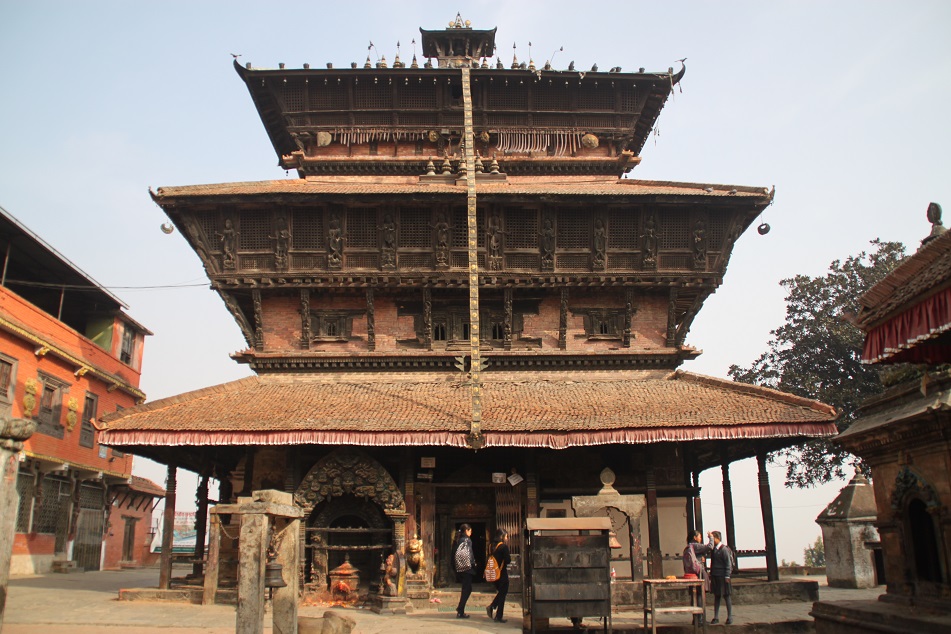
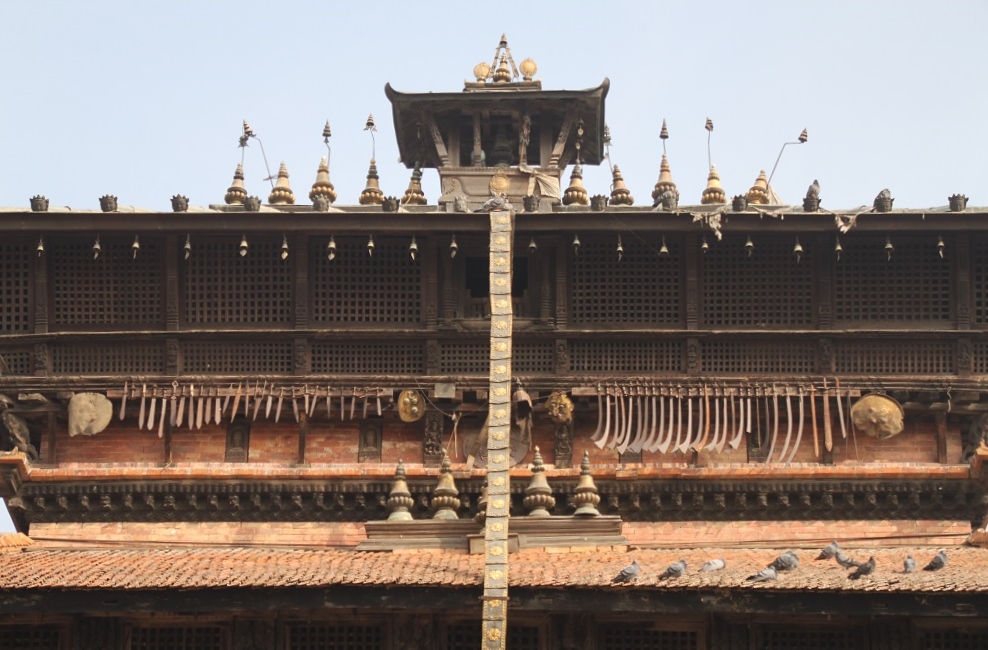
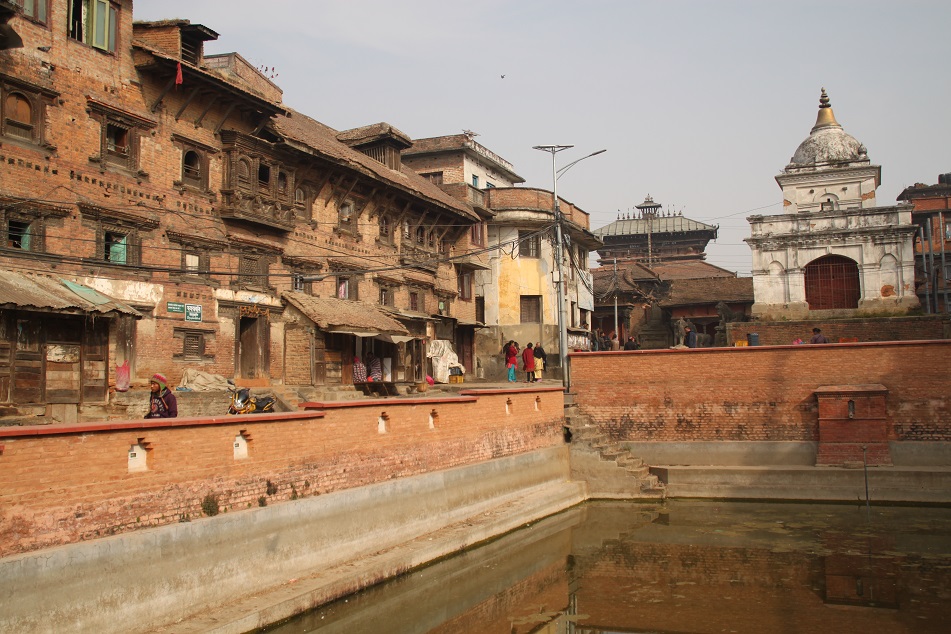
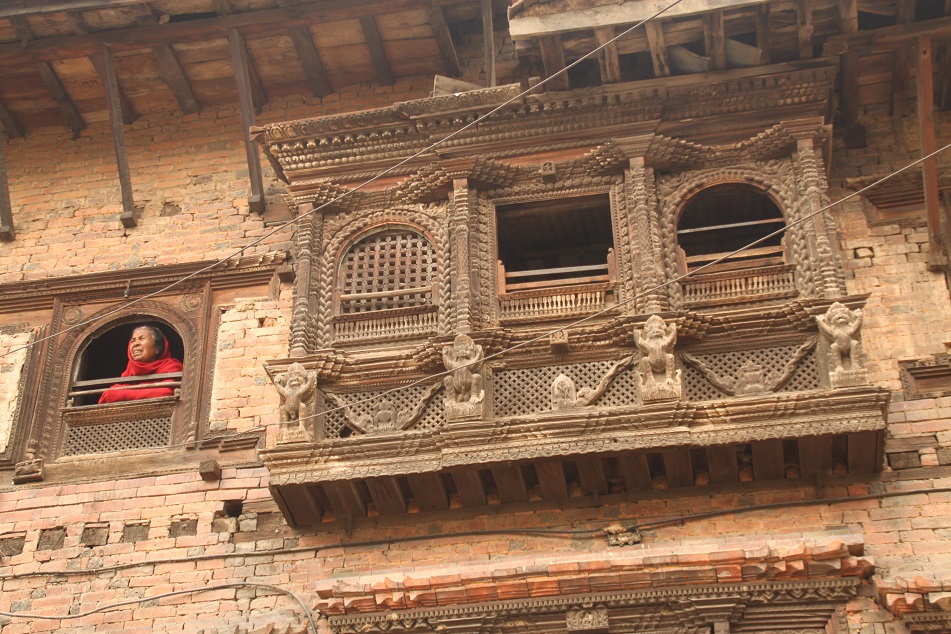


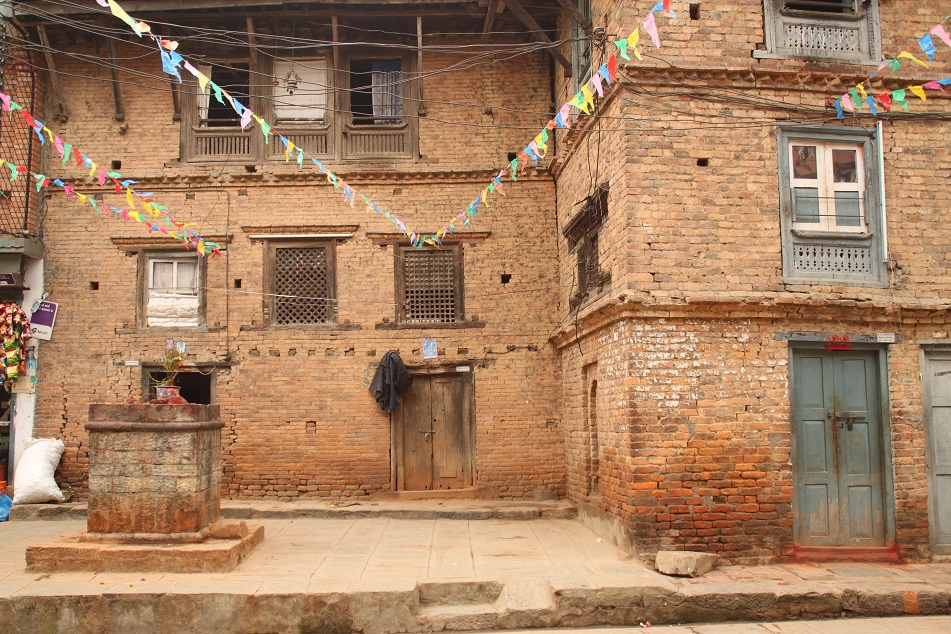




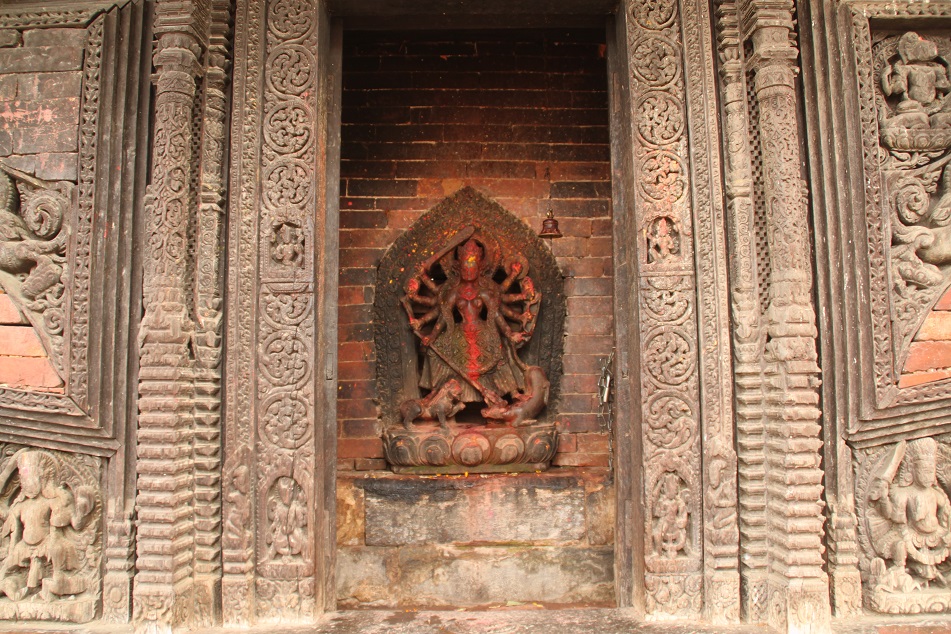
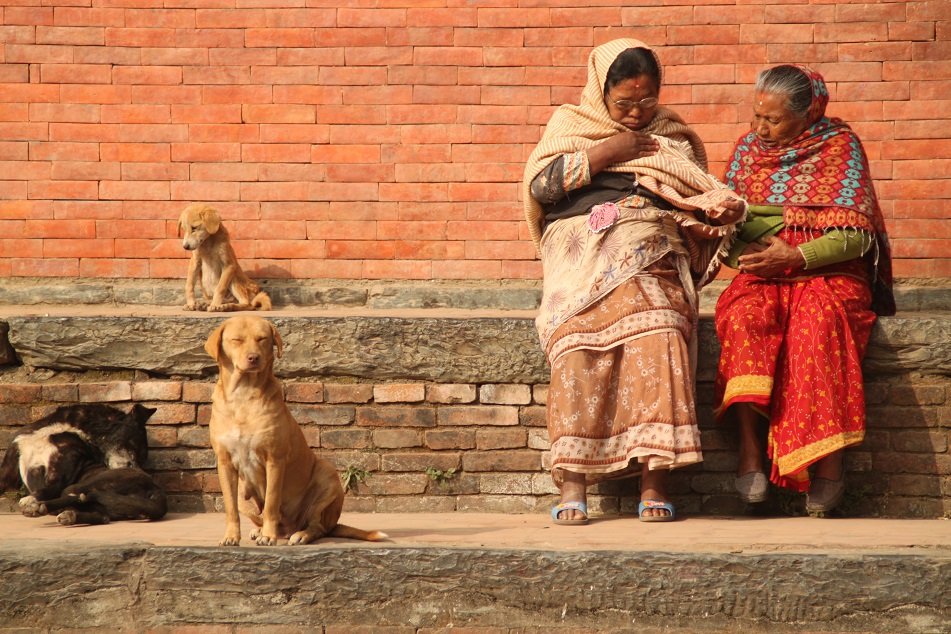

Amazing stuff.
LikeLiked by 1 person
I was constantly amazed by Nepal’s ancient cities during my stay there. Thanks for reading!
LikeLiked by 1 person
No problem. Hope my blog proves of interest to you too.
LikeLike
Hey!
wonderful pictures!
Amazing write! like always!
you really amaze me with your talent of reflecting the beauty with ur lovely words!
And the research behind all the articles is extra-ordinary!
Keep writing
keep travelling
keep creating magic!
: )
Wishes and sun-shine!
keep smiling!
—-Jyotee
LikeLiked by 1 person
Thanks Jyotee. You’re too kind. 🙂 The research took the most of time when I was writing this post. Kirtipur (and other cities in the Kathmandu Valley) has such a long, convoluted, yet fascinating history. Have a great weekend!
LikeLiked by 1 person
A gorgeous set of photos, Bama – you captured the feel of Kirtipur so well. It is pretty amazing to think that we only heard about it by word of mouth, then saw the place mentioned in the detailed guidebooks of our hotel in Thamel! If those things hadn’t happened we might have missed out on Kirtipur entirely. As usual I really enjoyed reading your historical accounts.
LikeLike
Thanks to Mukunda! 🙂 Our visit to Kirtipur not only was nice, but it also helped me understand the history of the country better. I remember one of the snacks we had at that place Mukunda took us was quite addictive. Makasih James!
LikeLiked by 1 person
Bama, I’m in love with that photo of a sudden burst of turquoise. There’s something harmonic about the composition of details and lines, and the way it looks as if time has passed from left to right, then and now, in one moment. Love the two women discussing fashion as well, and how you bring personality into your narratives about history. Looking forward to Chapter Two!
LikeLike
Thank you, Kelly. Those turquoise walls were a pleasant surprise for me too, and I loved how the locals got the idea to use such a bright color amid the sea of terracotta which was distinctively Newar. As for the photo of those two women, it shows us that people around the world have so many things in common, including our penchant for looking good. 🙂 Chapter Two is coming soon! Thanks again, Kelly.
LikeLike
Great post and amazing photos!
LikeLike
Much appreciated, Norbert. Thanks for reading.
LikeLiked by 1 person
Hello from India! have been following your write ups since quite some time now. Love the way you segment the chapters and then tell the story. Superb pictures! Love the details! 🙂
LikeLike
And hello from Indonesia! I really appreciate your time reading my blog, and I’m glad you enjoyed the posts. This series is what I can do to raise the awareness of the past connetions of South and Southeast Asia, and beyond, so we understand more of each other.
LikeLiked by 1 person
Aku ga kesini nih…. huhuhu gulung2 waktuku habis waktu itu (alasan 1001 untuk mengakui males survey hahaha) masih banyak tempat yg aku sisain utk kunjungan berikutnya. Jd nungguin postingan Bama selesai abis itu baru ke nepal lagi hehehe….
LikeLike
Tapi jujur ya mbak, waktu udah sampe di Nepal pun saya belum tau mengenai Kirtipur. Baru pas mulai baca-baca buku yang ada di hotel saya tau ada kota tua yang namanya Kirtipur. Nah pas kebetulan banget ada mas-mas guide dadakan yang nawarin nemenin ke Kirtipur sekalian makan siang di rumah orang tuanya (cerita soal itu lain waktu aja ya, hehe). Habis ini postingan saya beralih ke Hampi di India mbak..
LikeLiked by 1 person
Wah ini ceritanya belooook… aku ikut ngepot hahaha… dari Kirtipur yang menyisakan cerita (duh nanggung banget) ke Hampiiiii…. ini wajib ditunggu dengan deg2an. Fotonya pasti luar biasa Bama!! HAMPI… dari dulu aku sudah main mata dg Hampi.. ga sabar deh.. sebelum Minggu ya… duh Hampi… bisa mimpi niii…
LikeLike
Hahaha, duh mbak ngepotnya ati-ati yaa.. Hampi ini juga udah masuk di destinasi impian saya dari dulu mbak, dan pas akhirnya bisa menginjakkan kaki di sana memang luar biasa tempatnya. Nanti bakal ada 3 postingan mengenai Hampi. Ditunggu ya di hari Minggu, hehe.. 😀
LikeLiked by 1 person
I love the burst of turquoise – it’s like a refreshing drink of water on a dusty day in the Kathmandu valley! Great photos and prose about this lesser-known city, and I like how you captured so much local life with the women, the dogs, etc.
LikeLike
“Like a refreshing drink of water on a dusty day” is a nice way to describe that bright color, Lex. I wonder if the locals were inspired by the color of the rivers as the sea was too far away from where they lived. Thanks for your kind comment, Lex!
LikeLiked by 1 person
Turquoise is gem native to northern Nepal and Tibet. It has always been part of our culture and has been used in native art works, jewellery, architecture, fashion etc so you shouldn’t be surprised.
LikeLiked by 1 person
Your comment also made me think of places like Uzbekistan whose ancient architecture also incorporates turquoise. Thanks for sharing the information!
LikeLike
“Prithvi Narayan Shah ordered the mouths and noses of all male residents of Kirtipur over the age of 12 to be cut off” – seriously? That’s horrific, truly horrific. Human beings can be truly evil. People talk about hell – it’s right here on earth. The good news is that so is heaven if you look for it.
Another fascinating post Bama.
Love the pit bull.
Alison
LikeLike
Yes, I was also surprised when I learned about that. No wonder the resentment toward the monarchy was so deep-rooted among the residents of Kirtipur. However as we travel we also learn that there are good people on this planet, as you said. Thanks for reading, Alison.
LikeLiked by 1 person
Bama the photo of the woman looking out the window where royalty once did should be on a magazine cover. As if you dressed her ain red and had her model for you. Perfect!
LikeLike
Wow, that’s very kind of you to say, Sue. As you know, the thing about photography is you need to be at the right moment and in the right place, and I guess I was there at the right moment and in the right place because minutes later she was gone. Thanks again!
LikeLiked by 1 person
And of course after catching up with James, next stop was obviously here haha! I just realize how little I know about Asia and how filled with treasures like those above it is. The few travels I made overseas where only to the Americas, but I never had the chance to go further into the East. At least, reading you and James gives me an exclusive sneak peek to this wonderful side of the world.
I’ll be on the lookout for more, good to see you’re still active in here. Best!
Javier,
LikeLike
Hey Javier! It’s been a while since I heard from you the last time. How’s life?
The Americas surely have so many treasures to explore, from Mayan ruins in Central America to ancient Inca cities and colorful Spanish/Portuguese churches, it’s a part of the world I have yet to visit. You should go to Southeast and South Asia one day for both regions are home to some of the world’s most astonishing cultural treasures.
Glad to hear again from you!
LikeLike
Stunning photo and beautifully crafted article. I hope I can visit Nepal soon! I heard that the cost of travelling expenses there is affordable.
LikeLike
Thank you for reading and for leaving such a kind comment, Annika. Unfortunately I was in Nepal when prices skyrocketed due to the months-long fuel crisis. However I read that things have improved recently and traveling expenses should return to normal anytime soon, if not already.
LikeLike
I would love to visit Nepal. I’ve been to india but it was rough! I heard that Nepal was easier on the nerves! Is it true?
Fantastic photos by the way Bama 🙂
LikeLike
Oh yes it was. Nepal was very mild and gentle compared to India. Both countries are home to so many fascinating historical and cultural sites, but after traveling for a while in India, Nepal was such a nice respite for me. It’s funny that India seems to be surrounded by countries where people can relax, i.e. Nepal, Sri Lanka, the Maldives, and Bhutan. Thanks Victoria!
LikeLiked by 1 person
Thanks for sharing so much history about Kirtipur, I didn’t know that history especially about the ambitious and cruel Prithvi Narayan Shah and what he sent to do to those males 12 and up. Interesting read!!!
LikeLike
You’re welcome Liz. Such a horrible chapter in the history of Kirtipur it really was — men can be either very cruel or very kind toward others, and that has pretty much shaped the history of mankind. Thanks for reading!
LikeLiked by 1 person
Bama, you bring worlds that I’ve only heard in passing (or never knew existed) to life with your writing and photography. Your posts opens the mind to possibilities and to the past. Wonderful world of Kirtipur and its people you have brought to us, thank you 🙂
LikeLike
Many thanks for your encouraging words, Randall. I was inspired by the places I went to, so this is the least I could do to share what I learned to others. Traveling really is a window to the world, and I hope my stories can also encourage other people to collect lessons available for them to take along the road. Thanks again!
LikeLike
Another wonderful, informative post, Bama. Lordy, people (especially people with insane power to do whatever they want with impunity) can be so cruel, sometimes. Luckily there are people like you and James who blog about food. I love the photo of the lady in red looking out the window…I photographed a girl looking out a window looking very similar to that one, but she wasn’t wearing red. Oh, the dog is a boxer I think.
LikeLike
Thanks Badfish. Over thousands of years humans have always been seduced by power — which has inspired writers like J.R.R. Tolkien to create great stories about men’s struggle with it. Unfortunately back then there was no food blog, only people who loved to cook and eat. So we’re contributing to world peace, I suppose. 🙂 Did you notice that red was the color of choice for many Nepalese women. I wonder if there’s a philosophical reason behind their penchant for the color. Oh, you’re right, the dog is a boxer. Thanks for that!
LikeLike
Power…yeah, it’s a killer. I wonder if we’ll ever learn anything about that. Or good and evil. And right…you contribute to world peace! I didn’t really notice that red was any more popular than other colors, but it was definitely worn by many. And some tribes in Myanmar wore red head wraps. Maybe it’s tribal?
LikeLike
Maybe it was just me. I wore a red sweater from time to time during my stay in the country and at one point I realized the other people who also wore red outfit were the women.
LikeLike
Ha! One time in Bali I wore a red t-shirt and had on red Crocs. When I pulled my motorbike to park at the curb, a local laughed and pointed…and said something I didn’t understand. Did it mean something or did he just like my color combination is what I’d like to know
LikeLike
Maybe he admired your style. 🙂
LikeLike
I hadn’t realized how color coordinated I looked until …yeah, I think he did like my style
LikeLike
Bama, what an enticing gallery! The Newari details are exquisite. The boxer at the window is my favouirite. Not going to be missing Kirtipur – the land of glory – when I visit Nepal 🙂
LikeLike
Ahh, so that what Kirti means! You really shouldn’t miss Kirtipur, Madhu, as it is just a short drive away from Kathmandu. When I was there I felt that the local residents seemed a bit watchful of us — probably the Battle of Kirtipur created this sense of cautiousness toward strangers, or maybe it was simply because Kirtipur didn’t get as many tourists as other ancient cities in the valley. Thanks Madhu!
LikeLiked by 1 person
Again…you made me jow dropping !!! Fantastic MAs !
LikeLike
Thank you sudah berkunjung dan meninggalkan komen yang encouraging mas. 🙂
LikeLike
Reblogged this on NaturalKit.
LikeLike
Great Work! Good to know that people are fascinated with the history of my country.
LikeLike
Thanks Supratik! I truly feel that Nepal’s cultural scene is somewhat overlooked by its snow-capped mountains, which is a shame because the country is home to some of the most beautiful temples I’ve ever seen.
LikeLiked by 1 person